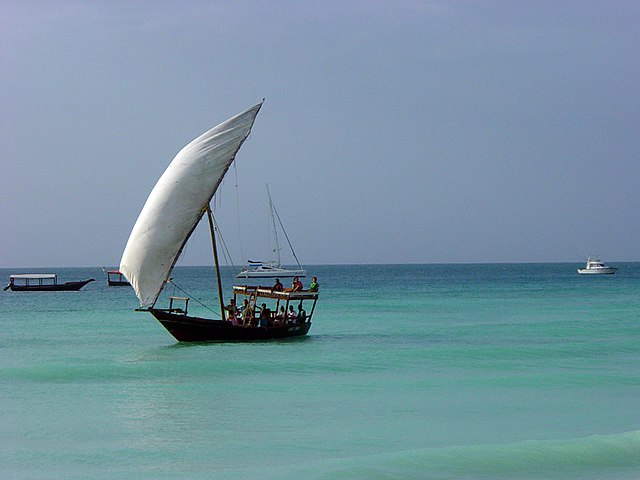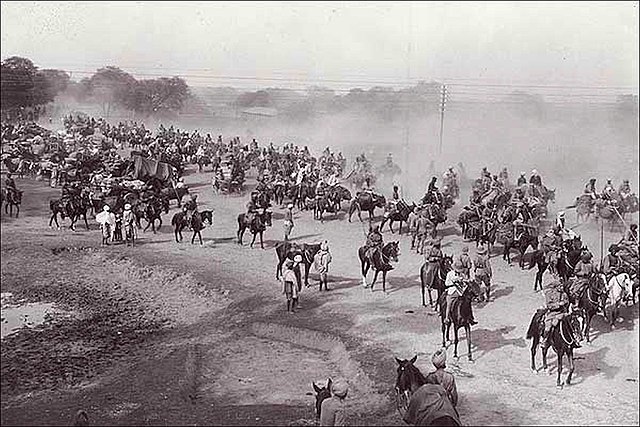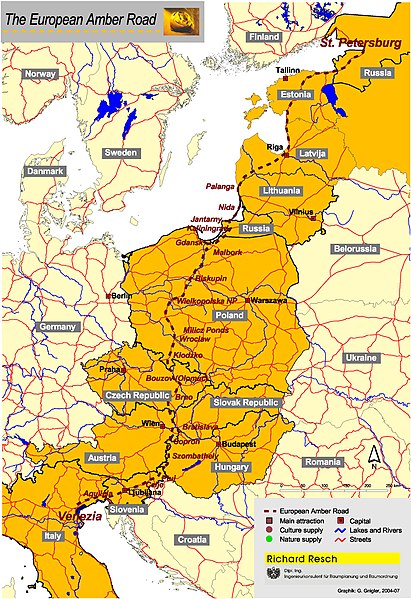A trade route is a logistical network identified as a series of pathways and stoppages used for the commercial transport of cargo. The term can also be used to refer to trade over bodies of water. Allowing goods to reach distant markets, a single trade route contains long-distance arteries, which may further be connected to smaller networks of commercial and noncommercial transportation routes. Among notable trade routes was the Amber Road, which served as a dependable network for long-distance trade. Maritime trade along the Spice Route became prominent during the Middle Ages, when nations resorted to military means for control of this influential route. During the Middle Ages, organizations such as the Hanseatic League, aimed at protecting interests of the merchants and trade became increasingly prominent.
A Javanese jong, a large Javanese vessel from the 11th−17th century. Shown with the characteristic tanja sail of Southeast Asian Austronesians.
Much of the Radhanites' Indian Ocean trade would have depended on coastal cargo-ships such as this dhow.
For centuries, the Grand Trunk Road has served as the main artery for travel across Northern India. A scene from the Ambala cantonment during the days of the British Raj.
Lingling-o designs from the Philippines.
The Amber Road was an ancient trade route for the transfer of amber from coastal areas of the North Sea and the Baltic Sea to the Mediterranean Sea. Prehistoric trade routes between Northern and Southern Europe were defined by the amber trade.
The Amber Road (east route), as hypothesized by Polish historian Jerzy Wielowiejski, Główny szlak bursztynowy w czasach Cesarstwa Rzymskiego (Main Route of the Amber Road of the Roman Empire), 1980
The route from the Baltic Sea
Amber deposits in Europe







